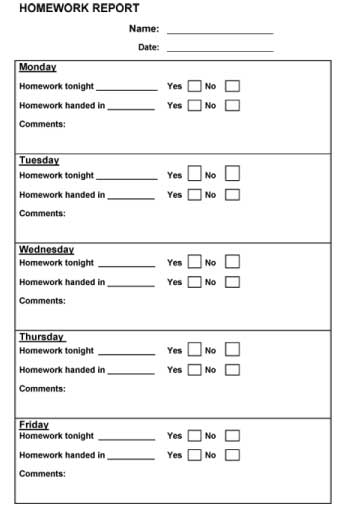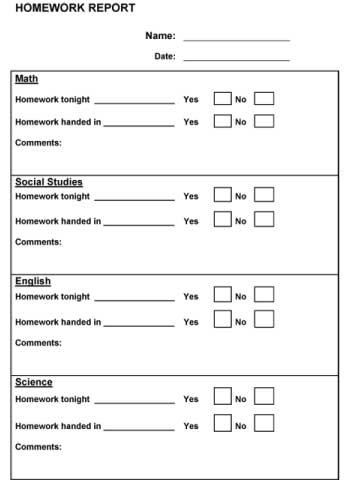Adapting Curriculum for Students with Special Needs
Part IX-Adapting Grading Systems
One of the most difficult decisions for teachers working with children with special needs is grading students. This process presents a dilemma for all educators. If we use traditional competitive grading systems then students who try, participate, finish assignments but because of their disability fail tests will receive a failing grade when compared to their peers. This type of approach may lead to frustration, loss of motivation, parent frustration, and a “why bother attitude” on the part of the child. On the other hand, grading students solely on attitude, effort, accountability, responsibility etc., despite failing grades, may mislead both parents and students into setting unrealistic goals.
Salend, (2001) describes a variety of student grading systems that you may want to consider when determining your student’s grades.
Numeric/Letter Grades: Teachers assign numeric or letter grades based on students’ performance on tests or specific learning activities.
Checklists/Rating Scales: Teachers develop checklists and rating scales that delineate the benchmarks associated with their courses and evaluate each student according to mastery of these benchmarks. Some school districts have revised their grading systems by creating rating scales for different grade levels. Teachers rate students on each skill, using a scale that includes “not yet evident,” “beginning,” “developing,” and “independent.”
Anecdotal/Descriptive and Portfolio Grading: Teachers write descriptive comments regarding students’ skills, learning styles, effort, attitudes, and growth, and strategies to improve student performance. These comments can be included with examples of students’ work as part of portfolio grading.
Pass/Fail Systems: Minimum course competencies are specified and students who demonstrate mastery receive a “P” grade, while those who fail to meet the minimum standards are given an “F” grade. Some schools have modified the traditional pass/fail grading system to include such distinctions as honors (Honor-P), high pass (HP), pass (P), and low pass (LP).
Mastery Level/Criterion Systems: Students and teachers meet to divide the material into a hierarchy of skills and activities based on an assessment of individual needs and abilities. After completing the learning activities, students take a posttest or perform an activity to demonstrate mastery of the content. When students demonstrate mastery, they receive credit for that accomplishment and repeat the process with the next skill to be mastered.
Progressive Improvement Grading: Students take exams and engage in learning activities, and receive feedback and instruction based on their performance throughout the grading period. Only performance on cumulative tests and learning activities during the final weeks of the grading period, however, are used to determine students’ grades.
Multiple Grading: Teachers grade students in the areas of ability, effort and achievement. Students’ report cards can then include a listing of the three grades for each content area or grades can be computed by weighting the three areas.
Level Grading: Teachers use a numeric subscript to indicate the level of difficulty at which the students’ grades are based. For example, a grade of B6 can be used to note that a student is working in the B range at the sixth-grade level. Subscript systems can also be devised to indicate whether students are working at grade level, above grade level, or below grade level.
Contract Grading: Teachers and students agree on a contract outlining the learning objectives; the amount, nature, and quality of the products students must complete; and the procedures for evaluating student products and assigning a grade.
Individualized Education Program (IEP) Grading: Teachers assign grades that acknowledge students’ progress in meeting the students’ IEP goals and performance criteria.
Reporting to Parents
Parents place a higher priority on receiving information about their children’s progress than any other type of information they receive from schools (Cuttance & Stokes, 2000).
They further indicated that parents identified a number of concerns and improvements required in the reporting process:
● Parents consider there is a tendency, more common in primary schools, to avoid facing or telling hard truths. Parents understand how difficult it may be for teachers to convey ‘bad’ news, but nevertheless they indicate that they want a ‘fair and honest’ assessment, in plain language, of the progress of their children.
● There is a lack of objective standards that parents can use to determine their children’s attainment and rate of progress. Many parents specifically asked for information that would enable them to compare their children’s progress with other students or with agreed state/ territory-wide or national standards.
● Parents indicated they would like more interpretative and constructive reporting. Parents want something more substantial from reports than simple statements of achievement levels. They also want advice on what the report means in terms of the future learning goals for their child, and how parents can support their children’s learning.
● Most systems that report test results to parents do not require schools to incorporate these results in their reports to parents. Parents expressed a degree of confusion when they receive test reports in one style and metric and school reports in another unrelated style using a different metric.
● Parents want more comprehensible reports when they are based on outcomes reporting. Some education systems have adopted criterion-based outcomes reporting approaches, but many parents are finding it difficult to understand the reports because of changes in assessment practices.
● Parents require more appropriate timing of reports. They indicated a clear preference for reports earlier each year when they are in a better position to support their children with any learning improvement. Parents appreciated reports during Term 1, where these were provided, and find that an end-of-year report is too late for any constructive use.
● There is a mistrust of computer-generated reports in the parent community. Parents indicate that they find computer reports to be impersonal and limited. Parents want reports that are tailored to their individual children.
● Parent-teacher meetings need to be more useful to parents. Parents are dissatisfied with meetings that are poorly organized and lack focus and purpose. They consider meetings of 5-10 minutes to be too limited to be useful and believe they are organized mainly for ceremonial purposes. The timing of most meetings does not encourage an interactive discussion.
● The detection and prompt reporting of learning and behavioral problems is of major concern to parents. Many parents are concerned that they had not been advised as early as they could have been of their children’s learning problems.
● Parents would like an enhanced role for their children in the reporting process. Parents believe that their children are an integral part of the reporting process and seek to involve them in parent-teacher meetings as well as in other aspects of assessment and reporting.
In light of the above information you may want provide a variety of opportunities to convey information home to parents. Keep in mind that informed parents usually mean supportive parents. Non-informed parents may have a tendency to assume, write negative scripts, interrogate his/her child, and be defensive. We suggest you try the following:
- As previously mentioned in the Preliminary Stage you should hold individual interviews with the parent (s) at the beginning of the year. This allows parents to give teachers first hand information which will assist them in planning to meet the specific individual needs of each child.
- Use a variety of progress reports that focus on the specific needs or concerns of the child instead of a general one which focuses on too many areas. For instance if the parents are not aware if homework has been given and need to know that it was turned in the next day use the following forms:
Elementary and Secondary Grades


This form would be for Monday, Tuesday, Wednesday, Thursday, and Friday school days.
These types of daily records will reinforce the child’s accountability and assist the parents in working with the child at home. When you meet with the parents at the beginning of the year explain that they should expect this home every night.
Such Progress Reports are important sources of information on the child’s learning at school. Do not be afraid to tailor such reports to specific behaviors if they are required and necessary to facilitate positive outcomes.
More detailed reports focusing on academic achievement, social abilities, cooperation, etc. should be done monthly with children with learning disabilities.
However, have a policy that allows parents to request an interview with you at any time throughout the school year.
Provide a system of communication home on regular basis providing positive information, suggestions, solutions to issues you have noticed, or just to see if the parents have any concerns. Using this type of approach will facilitate the closeness with the school and facilitate your educational plans discussed later in this section.
The specific type or types of grading systems for children with special needs should be chosen with sensitivity and a plan to improve self esteem, not discourage or reinforce feelings of inadequacy.
Adapted from The Special Educator’s Survival Guide/Pierangelo/Jossey Bass/2005
Download this issue
Download a PDF file version of this issue of The Classroom Management Series –CLICK HERE

